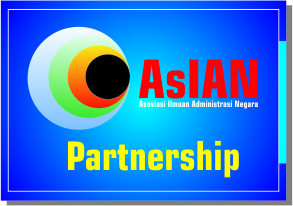Analisis Keautentikan dan Keunikan Laksa Cihideung Sebagai Kuliner Unggulan Kota Bogor
DOI:
https://doi.org/10.31334/trans.v9i2.30Keywords:
Food, local restaurant, Bogor, authenticity, uniqueness, and food tourism.Abstract
The purpose of this research was studying authenticity and uniqueness of Laksa Cihideung as distinctive culinary. This research focuses on the food authenticity and unique that is defined as the originality and genuine of Laksa Cihideung in various aspects. It is an important element in portraying the identity, culture, and heritage of Laksa Cihideung.
The research methodology employed in the present research was descriptive. The number of 35 questionnaires according to cluster and simple random sampling was filled out by participants. Hence, in-depth interviews were individually conducted among the food experts and questionnaire participants to seek how they interpret the meaning and characteristics of authenticity and uniqueness in Laksa Cihideung that influenced the taste of the food.
The data gathered through the questionnaire were analyzed via SPSS 20.0. Based on the findings of this research, Laksa Cihideung has a great influence on attracting tourists to a destination from its authenticity and uniqueness.
References
Abarca, M.E. (2004). Authentic or Not, It’s Original. Food & Foodways 12. Hal. 1-25. USA: Taylor & Francis.
Anonim. (2008). Dapur Naga, A Peek of Peranakan Cuisine. The Jakarta Post, Jakarta. Diakses pada 17 November 2014 dari situs resmi http://www.thejakartapost.com.
Anonim. (2014). Wisata Kuliner Masa Depan Industri Pariwisata. Banten. Diakses pada 23 Juni 2014 dari situs http:// pariwisata.rejanglebongkab.go.id/wisata-kuliner-masa-depan-industri pariwisata.
Anonim. (2011). Worlds 50 Most Delicious Foods. Diakses pada 17 Februari 2015 dari situs www.CNN.com.
Au, N. & Law, R. (2002). Categorical Classification of Tourism Dining. Annals of Tourism Research. 29(3), 819-823. Diakses pada 11 Juli 2015 dari www.Sciencedirect.com.
Blakey, C. (2012). Consuming Place: Tourism’s Gastronomy Connection. University of Hawai’i at Hilo: Hawai’I College of HOHONU. Hal. 51-54.
Boyne, S., Williams, F., & Hall, D. (2002). The Isle of Arran Taste Trail. London: Routledge.
Bryman, A. & Teevan, J.J. (2005). Social Research Methods. Oxford: Oxford University Press.
Bromokusumo, A. (2013). Peranakan Tionghoa Dalam Kuliner Nusantara. Jakarta: PT Kompas Media Nusantara.
Cahyono, et al. (2015). Pengaruh Proporsi Santan dan Lama Pemanasan Terhadap Sifat Fisiko Kimia dan Organoleptik Bumbu Gado-Gado Instan. Jurnal Pangan dan Agroindustri Vol. 3 No 3. Hal. 1095-1106. Fakultas Teknologi Pangan, Universitas Brawijaya, Malang.
Chomeya, R. (2010). Quality of Psychology Test Between Likert Scale 5 and 6 Points. Journal of Social Sciences 6 (3): 399-403. Thailand: Mahasarakham University.
Du Rand, G. E. & Heath, E. (2006). Towards a framework for food tourism as an element of destination marketing. Current Issues in Tourism. Hal. 9, 206-234.
Easton, V.J. & Mc Coll, J.H. (1999). Statistics Glossary VII. Diakses dari http://www.stats.gla.ac.uk/steps/glossary/basic_definition.html.
Francois, Fortin. (1996). The Visual Food Encyclopedia. Kanada: Macmillan.
Gunawan, T. et al. (2014). Identifikasi Wisata Kuliner Kota Bogor. Bogor: Universitas Pakuan.
Hall, M. & Mitchell, R. (2002). Tourism as a Force for Gastronomic Globalization and Localization. London: Routledge.
Hamzah, H, et al. (2013). Dimensions of Authenticity in Malay Cuisine from Experts’ Perspective. Academic Journal of Interdisciplinary Studies Vol. 2 No. 3, Hal. 369. Rome: MCSER Publishing.
Hjalager, A.M., Richards, G. (2002). Tourism & Gastronomy. London: Routledge.
Inskeep, E. (1991). Tourism Planning: An Integrated and Sustainable Development Approach. USA: Wiley.
Kothari, C.R. (2004). Research Methodology, Methods & Techniques. New Delhi: New Age International (P) Ltd.
Kusmayadi. (2000). Metodologi Penelitian dalam Bidang Kepariwisataan. Jakarta: PT Gramedia Pustaka Utama.
Long, L. M. (2003). Culinary Tourism: A Folkloristic Perceptive on Eating Otherness: Southern Folklor. USA: University Press of Kentucky.
Lowenberg, M. E. (1970). Socio-cultural Basis of Food Habits. Food Technology: Hal. 24, 27-32.
Murdiati, A & Amaliah. (2013). Panduan Penyiapan Pangan Sehat Untuk Semua. Jakarta: Prenamedia.
Murdijati. (2013). Bumbu, Penyedap, dan Penyerta Masakan Indonesia. Jakarta: PT Gramedia Pustaka Utama.
Nawawi, H. (1991). Metode Penelitian Bidang Sosial. Gajah Mada Universitas Press, Yogyakarta.
Nazir, M. (1999). Metodologi Penelitian. Jakarta: Ghalia Indonesia.
Okumus, B. et. al. (2007). Incorporating Local and International Cuisines In The Marketing of Tourism Destination. The Case of Hong Kong and Turkey. Tourism Management Vol. 28, Hal 253-261. Diakses pada 25 Maret 2015 lewat www.Sciencedirect.com.
Pendit, Nyoman S. (2002). Ilmu Pariwisata Sebuah Pengantar Perdana. Jakarta: PT Pradnya Paramita.
Pitana, I Gede & Gayatri, Putu G. (2005). Sosiologi Pariwisata, Kajian Sosiologis Terhadap Struktur, Sistem dan Dampak-dampak Pariwisata. Yogyakarta: Andi Offset.
Pitana, I Gede. & Surya Diarta, I Ketut. (2009). Pengantar Ilmu Pariwisata. Yogyakarta: Andi Offset.
Rukmana, R. (2001). Kunyit. Kanisius, Yogyakarta.
Sevilla, C. G et al, (2007). Research Methods. Quezon City: Rex Printing Company.
Shields, P.M & Tajalli, H. (2006). Intermediate Theory: The Missing Link to Successful Student Scholarship Journal of Public Affairs Education Vol 12 3. Hal. 313-334. Diakses pada 5 Mei 2015 dari situs http://ecommons.txstate.edu/polsfacp/39Local.
Spillane, J.J. (1994). Pariwisata Indonesia (Siasat Ekonomi dan Rekayasa Kebudayaan). Yogyakarta: Penerbit Kanisius.
Steinmetz, R. (2010). Food, Tourism and Destination Differentiation. The Case of Roturua, New Zealand. New Zealand: Auckland University of Technology.
Sudarmadji, S. (2003). Prosedur Analisa Bahan Makanan dan Pertanian. Yogyakarta: Liberty.
Verbeke, W. & Lo’pez, G.P. (2005). Ethnic Food Attitudes and Behavior Among Belgians and Hispanics Living in Belgium. British Food Journal 107 (11), 823-840. Diakses pada 7 April 2015 dari www.emeraldinsight.com.
Wahab, S. (1976). Manajemen Kepariwisataan. Jakarta: PT Pradnya Paramita.
Weber, F. (2006). Natural Hazards: Increasing Challenges for Tourism Destination. Switzerland: University of Berne.
Winarno, B. (2013). 30 Indonesian Traditional Culinary Icons. Jakarta: Kementrian Pariwisata dan Ekonomi Kreatif.
Winarto, W.P. (2003). Khasiat dan Manfaat Kunyit. Jakarta: Agromedia Pustaka.
World Tourism Organization. (2012). Global Report on Food Tourism. Madrid: UNWTO.
Yoeti, Oka A. (1996). Pengantar Ilmu Pariwisata. Bandung: Angkasa.
Yuliana. (2008). Ciri-Ciri dan Kerusakan pada Tahu. Yogyakarta: Trubus Agriwidya.
Downloads
Published
Issue
Section
License

This work is licensed under a Creative Commons Attribution-ShareAlike 4.0 International License
Please find the rights and licenses in Transparansi : Jurnal Ilmiah Ilmu Administrasi By submitting the article/manuscript of the article, the author(s) agree with this policy. No specific document sign-off is required.
- License
The commercial use of the article will be governed by the Creative Commons Attribution license as currently displayed on Creative Commons Attribution-ShareAlike 4.0 International License.
2. Author(s)' Warranties
The author warrants that the article is original, written by stated author(s), has not been published before, contains no unlawful statements, does not infringe the rights of others, is subject to copyright that is vested exclusively in the author and free of any third party rights, and that any necessary written permissions to quote from other sources have been obtained by the author(s).
3. User Rights
Transparansi : Jurnal Ilmiah Ilmu Administrasi spirit is to disseminate articles published are as free as possible. Under the Creative Commons license, Transparansi : Jurnal Ilmiah Ilmu Administrasi permits users to copy, distribute, display, and perform the work for non-commercial purposes only. Users will also need to attribute authors and Transparansi : Jurnal Ilmiah Ilmu Administrasi on distributing works in the journal and other media of publications.
4. Co-Authorship
If the article was jointly prepared by more than one author, any authors submitting the manuscript warrants that he/she has been authorized by all co-authors to be agreed on this copyright and license notice (agreement) on their behalf, and agrees to inform his/her co-authors of the terms of this policy. Transparansi : Jurnal Ilmiah Ilmu Administrasi will not be held liable for anything that may arise due to the author(s) internal dispute. Transparansi : Jurnal Ilmiah Ilmu Administrasi will only communicate with the corresponding author.
5. Miscellaneous
Transparansi : Jurnal Ilmiah Ilmu Administrasi will publish the article (or have it published) in the journal if the article’s editorial process is successfully completed. Transparansi : Jurnal Ilmiah Ilmu Administrasi editors may modify the article to a style of punctuation, spelling, capitalization, referencing and usage that deems appropriate. The author acknowledges that the article may be published so that it will be publicly accessible and such access will be free of charge for the readers as mentioned in point 3.
Every accepted manuscript should be accompanied by "Copyright Transfer Agreement"prior to the article publication.











